BSOD errors are the scariest to deal with for most users. The Bad Pool Caller is one such BSOD error. If you are facing this BSOD error, then don’t worry as in this article I have discussed the troubleshooting procedure you can follow in order to fix this.
Also read:
- Windows 10 Critical Service Failed BSOD Error – Easy Fixes
- BCD Missing In Windows 10! How To Resolve?
What Causes The Bad Pool Caller BSOD Error?
Contents
There can be various reasons for this error to get triggered. Here are some known causes of this error:
- Corrupted System File: Corrupted system files are known to trigger various errors on Windows 10.
- Malware or viruses: Malware and viruses can infect your PC and trigger such errors. Also, 3rd party malicious applications can also trigger it.
- Outdated Windows: Updating Windows is extremely important as it patches various bugs and errors, it also updates the security. Outdated Windows are known to trigger errors such as this one.
- Faulty or outdated or drivers: As the error is driver related, it is highly possible that faulty, corrupted, or outdated drivers are behind this.
- Bad Memory sectors: Bad memory sectors are another known reason for this issue.
These are some of the known causes of this error. Now, it is time to troubleshoot this issue.
Solution 1: Perform A System Restore
System Restore is the first thing you should try when you are facing BSOD errors. System restore allows you to restore a previous state of your PC. However, you can only system restore when you have enabled the option and a restore point previous to the point when this error was triggered has been created. This way you can restore to that state of your PC and avoid whatever is causing the BSOD error.
So, if System Restore was enabled in your PC prior to this Bad Pool Caller error, then follow the steps given below to restore your PC to the previous point:
- Open the Startup Repair options.
- Select the Troubleshoot option.
- Click on the Advanced options button.
- Select the System Restore option.
- Choose that System point that you want to restore and follow the on-screen instructions to complete the process.
If System Restore was disabled in your PC prior to this error, or if even restoring the system point to a previous point could fix this issue, try the other solutions given below.
Solution 2: Use Automatic Startup Repair Tool
The automatic Startup repair tool fixes any booting related issues of Windows. In this situation, running the Automatic Startup option should fix the Bad Pool Caller error. To run the Automatic Startup Repair tool, follow the steps given below:
- Open the Startup Repair options.
- Select the Troubleshoot option.
- Click on the Advanced options button.
- Select the Automatic Repair option.
- Follow the on-screen instructions to complete the process.
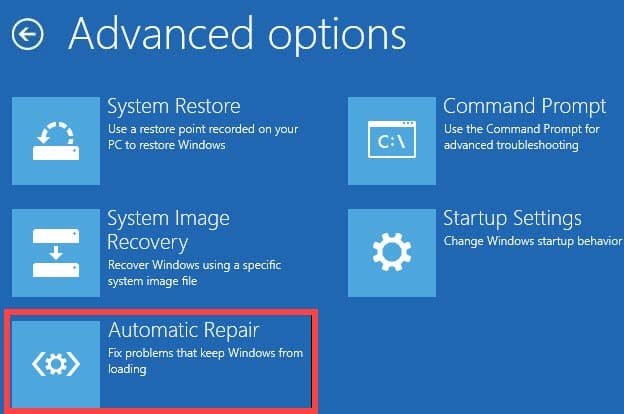
After the Automatic Startup Repair tool finishes running, the BSOD Bad Pool Caller error should be fixed.
Solution 3: Run SFC And DISM Scan
Corrupted system files can also be responsible for this BSOD error. Try running the SFC scan to fix the corrupted system files and the DISM scan to fix the Windows image. To do it, follow the steps given below:
- Open the Startup Repair options.
- Select the Troubleshoot option.
- Click on the Advanced options button.
- Select the Command Prompt option. This will open the Command Prompt on your screen.
- Type the following command and press Enter after finishing it:
sfc /scannow
- Wait for the scan to finish. It will take some time so do not close it prematurely.
- After the scan finishes, restart the computer.
- Now, open the Command Prompt again.
- Type the following command and press Enter after finishing it:
DISM /Online /Cleanup-Image /RestoreHealth
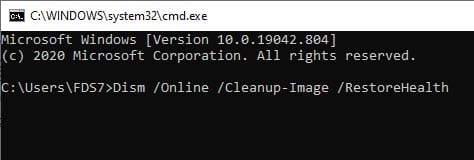
- Wait for the scan to finish and then restart.
Now, check whether the BSOD error Bad Pool Caller persists. If yes, then you will now have to try some of the extreme solutions.
Solution 4: Update Windows
Updating Windows should be one of the earliest things you try when facing this error. Keeping Windows outdated is asking for trouble. If you have already updated to the latest Windows version, skip to the next solution.
To update the Windows, follow the steps given below:
- Type Check For Updates in the Start menu and select the top result.
- Click on the Check for updates option.
- Windows will check whether any update is available or not. If any update is available, download and install it.
- Restart the computer.
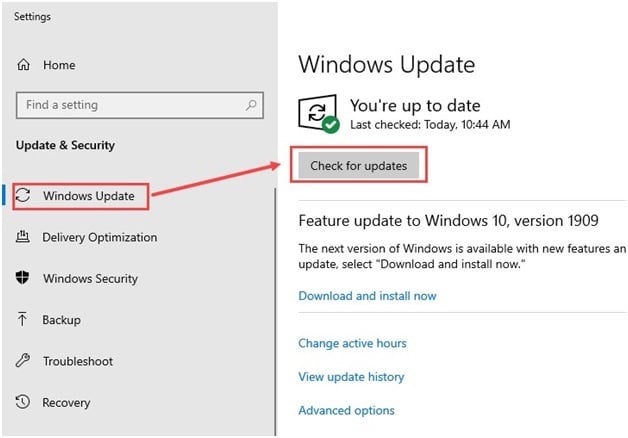
After you have updated and restarted, check if the Bad Pool Caller BSOD error reappears.
Solution 5: Update Drivers
The next thing you can do is troubleshoot the drivers. It is always advised to keep your drivers fully up to date. To update your drivers, follow the steps given below:
- Press the Windows + R keys to open the Run utility.
- Type devmgmt.msc and press Enter to open the Device Manager.
- Right-click on the outdated drivers and select the Update driver option.
- Click on the Search for updated drivers option.
- Follow the on-screen information to complete the process.
- Restart your PC.
Solution 6: Uninstall The Problematic Application
If you have recently installed an unknown 3rd party application, and since then facing these BSOD errors, there is a big chance that the error is triggered by that application. If this is the case, then uninstall that application and check whether it fixes this issue.
To uninstall the problematic application, follow the steps given below:
- Press the Windows + R keys to open the Run utility.
- Type appwiz.cpl and press Enter to open the Programs and Features window.
- Locate the 3rd party application among the other listed apps and right-click on it.
- Select the Uninstall option.
- Follow the on-screen instructions to complete the uninstallation process.
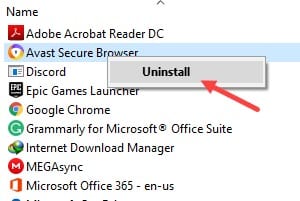
Solution 7: Run The Windows Memory Diagnostic Tool
Faulty or corrupted memory modules are known to trigger many BSOD errors, Bad Pool Caller included. If this is caused by a faulty memory module, then it can be fixed by running the Windows Memory Diagnostic tool. To run the Windows Memory Diagnostic tool, follow the steps given below:
- Press the Windows + R keys to open the Run utility.
- Type mdsched.exe and press Enter to open the Windows Memory Diagnostic dialog.
- Click on the Restart now and check for problems (recommended) option.
- Your PC will restart now and Windows will start checking the memory for any module errors. Wait for it to finish.
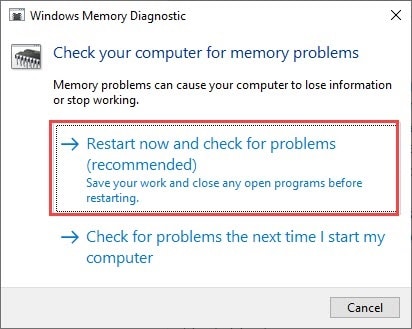
Check if any memory error was found and whether it was fixed.
Solution 8: Run Chkdsk Scan
Another way to check corruption in the memory is by using the Chkdsk scan. The chkdsk scan checks the memory for any corruption and fixes it.
To run the Chkdsk scan, you will need to open an elevated Command Prompt. After you have opened the command prompt, follow the steps given below:
- Type the following command and press Enter:
chkdsk - Windows will now start checking the memory for corruption and then fix it. It will take some time, so don’t close prematurely.

Solution 9: Reset Your PC
If the above solutions fail to work, then you need to try out some of the advanced solutions. The first extreme solution you can try is resetting your PC. To reset the PC, follow the steps given below:
- Open the Startup Repair options.
- Select the Troubleshoot option.
- Select the Reset this PC option.
- Click on the Keep my files option so that your files don’t get deleted.
- Follow the on-screen instructions to complete the process.
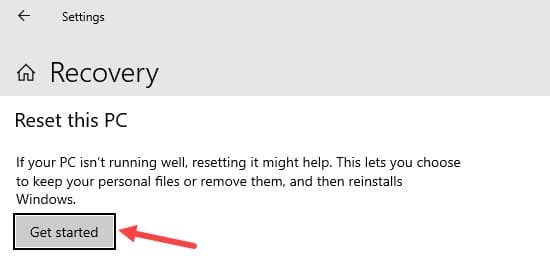
Solution 10: Perform A Clean Reinstallation Of Windows 10
If resetting your PC also doesn’t work, then the only alternative you have left is to clean install Windows 10. After you clean install your Windows 10, the BSOD error should be fixed. To clean install Windows, follow the steps given below:
- Insert your DVD or USB installation device and restart your computer.
- When it boots up, press F10 to access the Boot Override Menu.
- In the boot section, change the boot order to put the device you want to boot from at the top.
- Find and select the Save and Restart option. Your computer should now boot into the Windows 10 setup program.
- Now, select your language, time and currency format, and input method. Then, click on the Next option.
- Click on the Install Now button and enter your Windows activation key.
- Select the Custom Install Windows only (advanced) option.
- You will see various disks called Drive 0, Drive 1, and so on. Delete all these partitions by selecting each one and clicking Delete.
- Finally, select the Drive you want to install your Windows and click on the Next option.
Wrapping Up
So, there you have it. Now you know how to fix the Bad Pool Caller BSOD error. The above solutions should help you fix this issue. If you have any questions related to this topic, ask in the comment section.

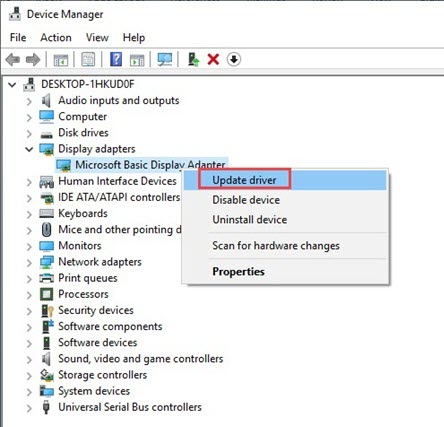
Leave a Reply